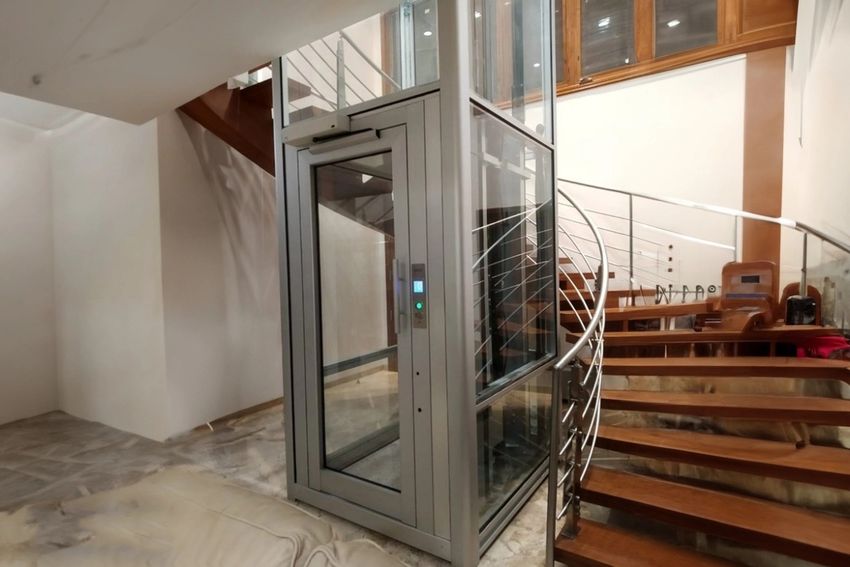Introduction: The Hidden Power Behind Elevators
Ever wondered how an elevator effortlessly lifts people and heavy loads several stories high? The secret lies in the hydraulic lift system—a mechanical marvel that uses fluid pressure and piston mechanics to raise and lower the cabin.
Hydraulic elevators are commonly found in low to mid-rise buildings, warehouses, and industrial spaces, offering smooth, powerful, and cost-effective lifting solutions. But how exactly do they work? Let’s dive into the fascinating science behind hydraulic elevators!
1. What is a Hydraulic Lift and How Does It Work?
A hydraulic lift is a type of elevator that uses pressurized hydraulic fluid (usually oil) to push a piston inside a cylinder, which lifts the elevator car.
A. The Basic Working Principle
The system operates based on Pascal’s Law, which states:
“Pressure applied to a confined fluid is transmitted equally in all directions.”
This means that a small force applied to hydraulic fluid can be amplified to lift heavy loads—like an elevator with passengers!
B. Key Components of a Hydraulic Elevator
The hydraulic system consists of:
1️⃣ Hydraulic Pump – Pressurizes the hydraulic fluid.
2️⃣ Oil Reservoir (Tank) – Stores the hydraulic fluid when not in use.
3️⃣ Cylinder & Piston – The piston moves up when fluid is pumped into the cylinder.
4️⃣ Control Valve – Directs fluid flow to move the lift up or down.
5️⃣ Elevator Cabin – The platform that carries passengers or loads.
2. Step-by-Step Operation of a Hydraulic Lift
🚀 Step 1: Elevator Goes Up (Lifting Process)
- The hydraulic pump pushes fluid from the reservoir into the cylinder.
- As fluid enters, it creates pressure, pushing the piston upward.
- The piston lifts the elevator car smoothly.
💡 Fun Fact: The higher the fluid pressure, the more weight the lift can carry!
🔻 Step 2: Elevator Goes Down (Descending Process)
- The control valve opens, allowing fluid to flow back into the reservoir.
- Gravity pulls the elevator car down as fluid exits the cylinder.
- No pump action is needed—gravity does the work!
3. Advantages of Hydraulic Elevators
✔️ High Load Capacity – Can lift heavy objects effortlessly.
✔️ Simple Installation – Requires less space compared to traction elevators.
✔️ Lower Maintenance Costs – Fewer moving parts mean less wear and tear.
✔️ Safe & Reliable – Hydraulic systems have emergency brakes and backup power.
💡 Where Are Hydraulic Elevators Used?
🏢 Low- and mid-rise buildings (2-6 floors)
🏭 Industrial warehouses
🚗 Car lifts in garages
🛒 Shopping malls
4. Limitations & Challenges of Hydraulic Lifts
❌ Limited Height – Best for buildings under 6 stories due to pressure limits.
❌ Slow Speed – Not as fast as traction elevators.
❌ Potential Fluid Leaks – Requires proper maintenance to prevent oil leaks.
❌ Heat Generation – Pump operation produces heat, requiring cooling mechanisms.
5. Advanced Hydraulic Elevator Technologies
🚀 A. Eco-Friendly Hydraulic Lifts
- Water-based fluids replace oil, reducing environmental impact.
- Energy-efficient pumps lower power consumption.
🔄 B. Smart Control Systems
- AI-based sensors adjust fluid pressure dynamically for smoother rides.
- IoT-enabled monitoring helps in real-time fault detection.
💡 Future of Hydraulic Elevators:
✅ Energy-efficient solutions with solar power integration.
✅ Self-lubricating hydraulic systems for maintenance-free operation.
✅ AI-driven predictive maintenance for reduced breakdowns.
6. Safety Features in Hydraulic Elevators
🛑 Emergency Brakes – Stops the elevator in case of system failure.
⚡ Backup Power System – Ensures elevator movement during power cuts.
💨 Overload Sensors – Prevents operation if the weight limit is exceeded.
🔒 Manual Lowering Valve – Allows emergency descent during malfunctions.
7. Conclusion: The Power of Hydraulics in Elevators
Hydraulic elevators are a brilliant application of fluid mechanics and engineering. Though not as fast as high-rise traction elevators, they are powerful, reliable, and cost-effective for shorter buildings and heavy lifting applications.
Next time you step into an elevator, think about the engineering magic happening behind the scenes! 🏗️💡


